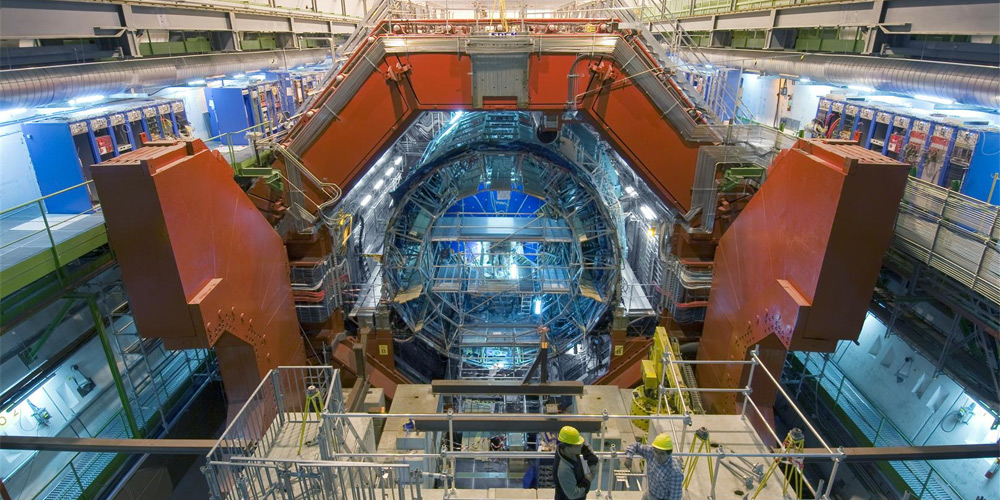Once again this year, CERN and Ars Electronica Futurelab are offering an artist an extraordinary opportunity to spend a two-month residency in Geneva and Linz and draw inspiration from state-of-the-art science. The deadline of the open call to apply for the Collide@CERN Ars Electronica Award is July 5, 2015 (11:59 PM UTC+2). Applications can be submitted at ars.electronica.art/artandscience. Meanwhile, let’s take a closer look at the center of gravity of the world of particle physics.
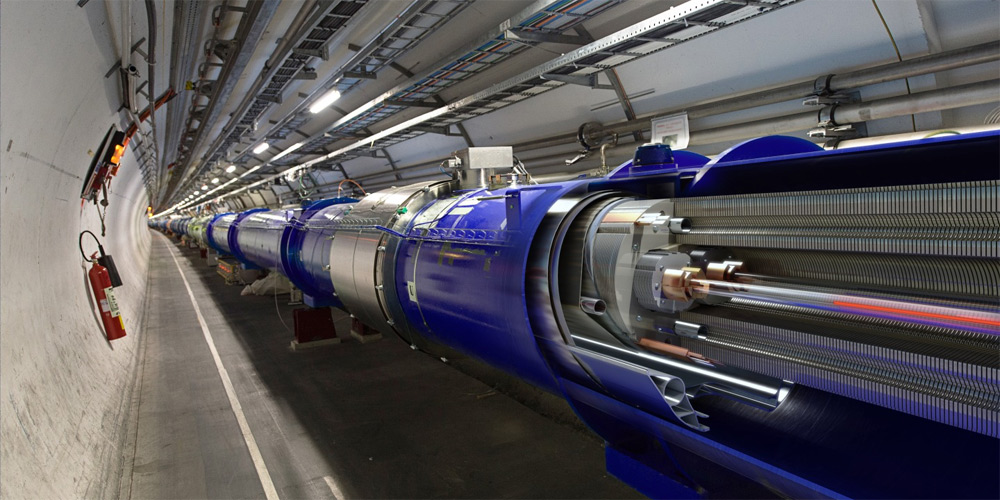
3D cut of the LHC dipole. Photo: CERN / Daniel Dominguez
Searching for something without knowing what it actually looks like—there are easier ways to make a living! So how do you describe the appearance of the universe’s dark matter? Using the standard model that has prevailed to date in particle physics, we can’t produce a unified description of all the forces we’ve identified. Thus, what we lack is a grand theory of everything.

Moving the calorimeter on side A of the ATLAS cavern, Photo: CERN / Claudia Marcelloni
Wouldn’t that be useful for science—to thus be able to deduce phenomena and explain them? Why don’t all elementary particles weigh the same? What happened to all the antimatter—after all, the amount of it present at The Big Bang was exactly the same as the amount of matter? And what was it like back then when the universe came into being?

People working at LHC, Foto: CERN / Anna Pantelia
Well-secluded, 100 meters underground in the vicinity of Geneva, Switzerland, a lot of people are looking for answers to all these questions revolving around our understanding of our world and the whole universe. This is where CERN has set up the Large Hadron Collider, a nearly 27-kilometer-long, ring-shaped tunnel system.
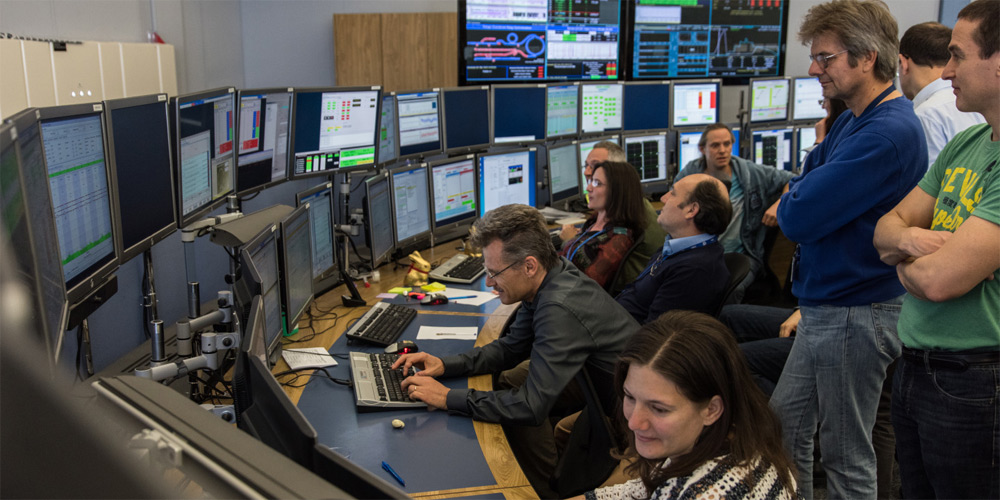
CERN Control Centre, Photo: CERN / Maximilien Brice
The LHC can accelerate so-called heavy particles, hadrons, up to 99.9% of the speed of light. In the experiments run here, these particles circulate through the LHC 11,000 times per second. And they collide with each other 600 million times per second and disintegrate into other particles. These are incomprehensible numbers that have to be measured, stored and processed.

One of the first collisions with “stable beam” at 13 TeV recorded by CMS. Photo: CERN / CMS Collaboration
A megabyte of raw data is generated when two particles collide with one another … and that happens 600 million times per second. The electronic signals that are measured during such a collision first have to be evaluated before they’re stored to memory. Algorithms written by scientists determine what actually gets saved. At such magnitudes, it’s essential to separate the wheat from the chaff as quickly as possible. Only events of interest to researchers are registered and stored; the rest is deleted.
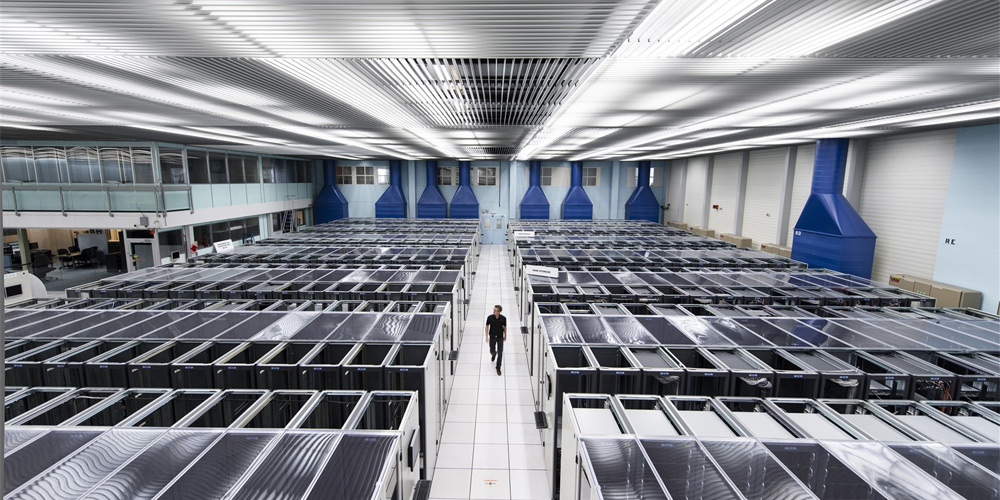
CERN Computer Centre, Photo: CERN / Maximillien Brice, Anna Pantelia
Accordingly, of the 600 million events per second, approximately 100,000 cases per second are documented. Detailed algorithms finally pare this number down to about 100-200 collisions per second. These data—a total of 30 petabytes per year—are then saved in the CERN Data Centre. But CERN doesn’t go it alone from here; via the Worldwide LHC Computing Grid, the Swiss facility is hooked into a global network of large computing centers that do the processing, multiple backup and analysis of this huge quantity of data.
21st-century research means global collaboration. And that, in turn, means that scholarly papers which draw upon data from the LHC have 3,000 authors, as was the case with an article recently published in the journal „Nature“.

Peter Higgs visits the CMS experiment, Photo: CERN / Maximilien Brice
Although an experiment might take only a few minutes or a couple of hours to run on the LHC, the assessment and analysis of the data—even with the help of thousands of scientists working on it simultaneously—takes many years. The existence of the Higgs boson was proven by the LHC in July 2012, and a year later, François Englert and Peter Higgs received the Nobel Prize for Physics for their theoretical work on this problem. Nevertheless, the evaluation of the measured data is still going on, as scientists attempt to get an overall picture of what actually occurs.
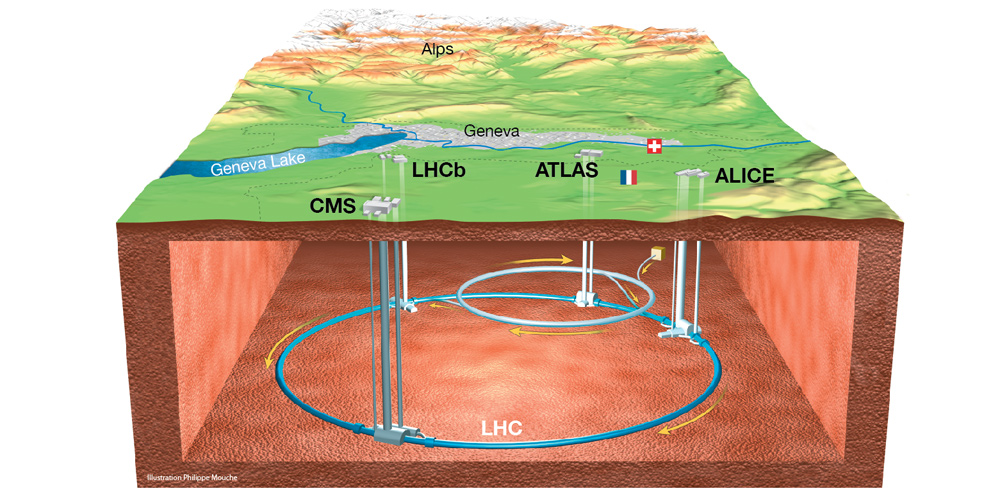
Overall view of the LHC. View of the 4 LHC detectors: ALICE, ATLAS, CMS and LHCb. Credit: CERN / Philippe Mouche
But the LHC particle accelerator is more than just a tube. Giant detectors are hooked up to it to get to the bottom of certain phenomena. ATLAS, CMS, ALICE and LHCb are the four largest detectors arrayed along the ring—the very appearance of this gargantuan machinery is impressive and fascinating at the same time. Here at CERN, scientific history is being made. This is the place where stories are emerging that just might give us answers to questions that homo sapiens has been asking since time immemorial.
The residency at CERN and the Ars Electronica Futurelab is designed to enable artists to deal with these narratives and this material, and to derive inspiration from it. The open call is still accepting applications. In mid-July, a jury of experts will select this year’s recipient. The artist will be presented at the Ars Electronica Festival 3-7, 2015 in Linz.
